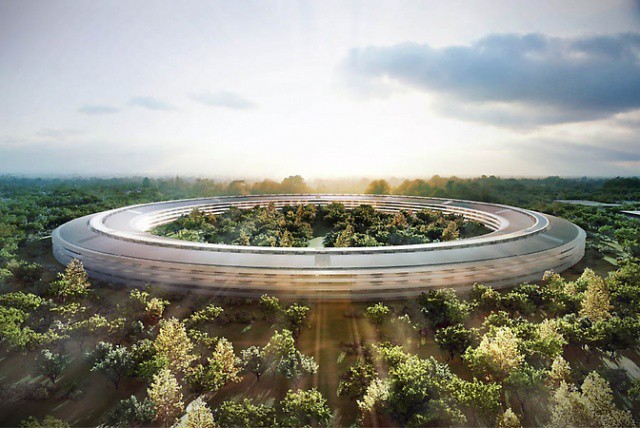It’s a spaceship, it’s Noah’s ark, it’s Apple Park
A graphic rendering of Apple Park.
May 25, 2017
Apple is undoubtedly one of the biggest tech companies in the U.S. if not the world. With 115,000 employees, it can be hard to squeeze into a singular office space much less work efficiently in said space. Apple’s solution to this problem is their new Apple Park, located in Cupertino, California, set to be completed by the end of 2017.
The “Park” has been in the works for quite some time. It was first envisioned by Apple co-founder Steve Jobs in 2006 when Apple bought nine contiguous properties for roughly $160 million. Over the next five years, Jobs and famous architect Norman Foster worked together to create a design concept that would eventually be approved by the city. In 2011, Jobs made his last public speaking appearance to announce the plans for Apple Campus 2, which was later renamed Apple Park. Three years later in February of 2014 ground was broken on the site.
The campus, which is nearing completion has Jobs’ fingerprints all over it. It is designed in a circular space ship-like manner to facilitate better communication among employees. The exterior is comprised of hundreds of sheets of curved glass panels all seamlessly fused together. The building is set on an area totalling 175 acres. The headquarters stand four stories tall and have three stories hidden under ground. Jobs intended for the campus to look less like an office park and more like a nature reserve. Hence the goal to fill 80 percent of the 175 acres with green space. Over 9,000 trees have been taken from the old campus or cultivated specifically for Apple Park. The inside of the circular ring boasts 30 acres of walking pathways, fruit trees, sitting areas, ponds and more. Additionally the campus will include a 1,000 seat theater named after Jobs, a 100,000 square feet wellness center and seven cafes.
With such a large facility and so many amenities to power, Apple Park appears to be a powering nightmare. However, the site will be powered entirely from renewable energy. Solar panels have been installed along the roof, making it one of the biggest solar roofs in the world and providing enough energy for 75 percent of the campus. The rest of the site will be powered with Bloom Energy Server fuel cells.
Such a space certainly comes with a hefty price tag. In addition to the $160 million to acquire the land space, Apple spent roughly $5 dollars creating Apple Park. This may seem lofty but with their recent market value reaching $800 dollars it’s more or less pocket change.
Apple continues to amaze people with their cutting edge innovation and Apple Park is just another example.









